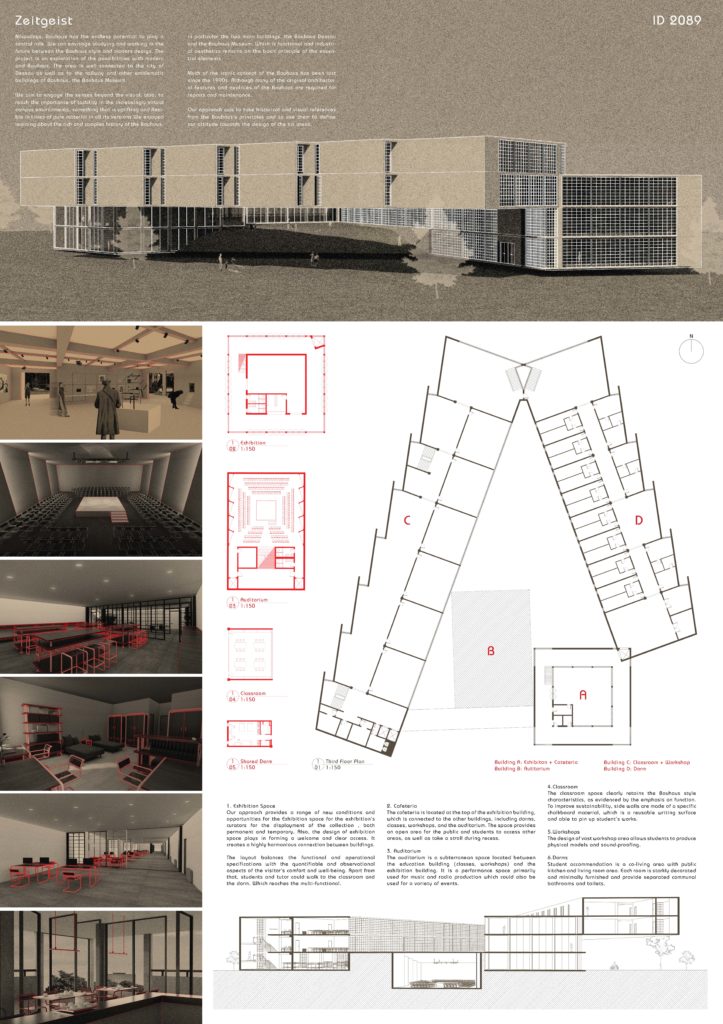Summary – Overall Design Concept
Nowadays, Bauhaus has the endless potential to play a central role. We can envisage studying and working in the future between the Bauhaus style and modern design.
The project is an exploration of the possibilities with modern and Bauhaus. The area is well connected to the city of Dessau as well as to the railway and other emblematic buildings of Bauhaus, the Bauhaus Museum.
We aim to engage the senses beyond the visual; also, to reach the importance of tactility in the increasingly virtual campus environments, something that is uplifting and flexible in times of pure material in all its versions.
1. Exhibition Space
Our approach provides a range of new conditions and opportunities for the Exhibition space for the exhibition’s curators for the displacement of the collection , both permanent and temporary. Also, the design of exhibition space plays in forming a welcome and clear access. It creates a highly harmonious connection between buildings.
The layout balances the functional and operational specifications with the quantifiable and observational aspects of the visitor’s comfort and well-being. Apart from that, students and tutor could walk to the classroom and the dorm. Which reaches the multi-functional.
We enjoyed learning about the rich and complex history of the Bauhaus, in particular the two main buildings, the Bauhaus Dessau and the Bauhaus Museum. Which is functional and industrial aesthetics remains on the basic principle of the essential elements.Much of the iconic concept of the Bauhaus has been lost since the 1990s. Although many of the original architectural features and qualities of the Bauhaus are required for repairs and maintenance.
Our approach was to take historical and visual references from the Bauhaus’s principles and to use them to define our attitude towards the design of the six areas.
2. Cafeteria
The cafeteria is located at the top of the exhibition building, which is connected to the other buildings, including dorms, classes, workshops, and the auditorium. The space provides an open area for the public and students to access other areas, as well as take a stroll during recess.
3. Auditorium
The auditorium is a subterranean space located between the education building (classes, workshops) and the exhibition building. It is a performance space primarily used for music and radio production which could also be used for a variety of events.
4.Classroom
The classroom space clearly retains the Bauhaus style characteristics, as evidenced by the emphasis on function. To improve sustainability, side walls are made of a specific chalkboard material, which is a reusable writing surface and able to pin up student’s works.
5.Workshops
The design of vast workshop area allows students to produce physical models and sound-proofing.
6.Dorms
Student accommodation is a co-living area with public kitchen and living room area. Each room is starkly decorated and minimally furnished and provide separated communal bathrooms and toilets.


